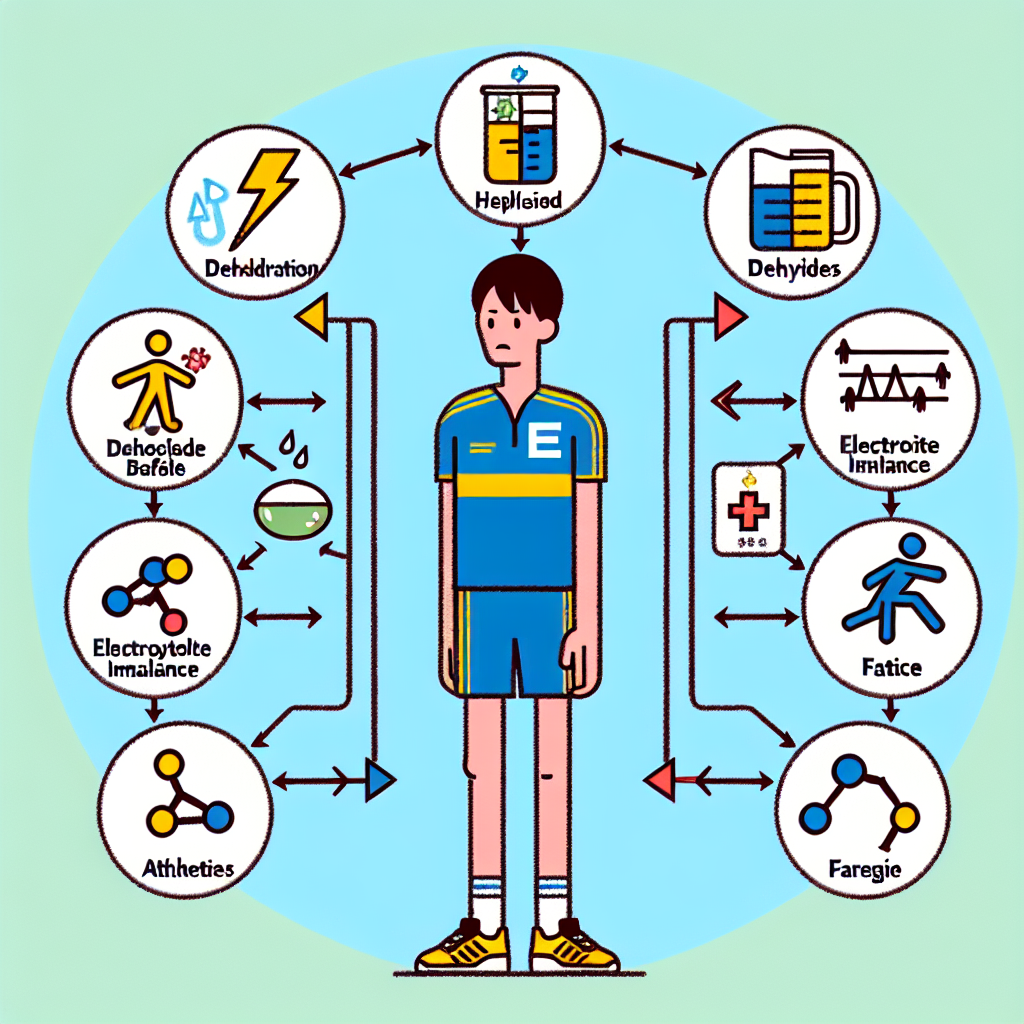-
Table of Contents
Side Effects of Furosemide in Athletes
Furosemide, also known as Lasix, is a commonly used diuretic in the world of sports. It is often used by athletes to quickly shed water weight and meet weight requirements for their sport. However, like any medication, furosemide comes with potential side effects that athletes should be aware of. In this article, we will explore the pharmacokinetics and pharmacodynamics of furosemide, as well as the potential side effects that athletes may experience when using this drug.
Pharmacokinetics of Furosemide
Furosemide is a loop diuretic that works by inhibiting the reabsorption of sodium and chloride in the kidneys, leading to increased urine production and subsequent water loss. It is rapidly absorbed after oral administration, with peak plasma concentrations reached within 1-2 hours (Katzung & Trevor, 2020). The drug is primarily metabolized in the liver and excreted in the urine, with a half-life of approximately 2 hours in healthy individuals (Katzung & Trevor, 2020).
It is important to note that the pharmacokinetics of furosemide can be affected by various factors, such as age, kidney function, and other medications being taken. Athletes should always consult with a healthcare professional before taking furosemide to ensure it is safe and appropriate for their individual situation.
Pharmacodynamics of Furosemide
The primary pharmacodynamic effect of furosemide is diuresis, or increased urine production. This can lead to a rapid decrease in body weight, making it a popular choice among athletes looking to meet weight requirements for their sport. However, furosemide also has other effects on the body that athletes should be aware of.
One potential effect of furosemide is electrolyte imbalances. As the drug increases urine production, it can also lead to the loss of important electrolytes such as sodium, potassium, and magnesium (Katzung & Trevor, 2020). This can have serious consequences for athletes, as electrolyte imbalances can lead to muscle cramps, weakness, and even cardiac arrhythmias (Katzung & Trevor, 2020).
Furosemide can also affect blood pressure, as it can cause a decrease in blood volume and subsequent decrease in blood pressure. This can be dangerous for athletes, especially those participating in high-intensity sports, as it can lead to dizziness, lightheadedness, and even fainting (Katzung & Trevor, 2020).
Side Effects of Furosemide in Athletes
While furosemide may be an effective diuretic for athletes, it is important to be aware of the potential side effects that may occur. These side effects can range from mild to severe and can greatly impact an athlete’s performance and overall health.
Electrolyte Imbalances
As mentioned earlier, furosemide can lead to electrolyte imbalances in the body. This can cause symptoms such as muscle cramps, weakness, and fatigue, which can greatly impact an athlete’s performance. In severe cases, electrolyte imbalances can even lead to cardiac arrhythmias, which can be life-threatening.
Dehydration
Due to its diuretic effect, furosemide can also cause dehydration in athletes. This can lead to symptoms such as thirst, dry mouth, and decreased urine output. Dehydration can greatly impact an athlete’s performance, as it can lead to fatigue, dizziness, and decreased endurance.
Hypotension
As mentioned earlier, furosemide can cause a decrease in blood pressure. This can be dangerous for athletes, especially those participating in high-intensity sports. Symptoms of hypotension may include dizziness, lightheadedness, and fainting, which can greatly impact an athlete’s ability to perform.
Gastrointestinal Disturbances
Furosemide can also cause gastrointestinal disturbances in some athletes. This may include nausea, vomiting, and diarrhea, which can greatly impact an athlete’s comfort and performance. These side effects may also lead to dehydration and electrolyte imbalances if not managed properly.
Other Potential Side Effects
In addition to the side effects mentioned above, furosemide may also cause other adverse effects in athletes. These may include headache, muscle cramps, and skin rash (Katzung & Trevor, 2020). It is important for athletes to be aware of these potential side effects and to consult with a healthcare professional if they experience any of them while taking furosemide.
Real-World Examples
The use of furosemide in sports has been a controversial topic for many years. In 2018, the World Anti-Doping Agency (WADA) added furosemide to its list of prohibited substances, citing its potential to mask the use of other performance-enhancing drugs (WADA, 2018). This decision was met with mixed reactions from athletes and sports organizations, with some arguing that furosemide should not be banned as it is commonly used for legitimate medical purposes.
One real-world example of the potential side effects of furosemide in athletes is the case of cyclist Floyd Landis. In 2006, Landis won the Tour de France but was later stripped of his title after testing positive for furosemide (BBC, 2006). Landis claimed that he had been using the drug to manage a hip injury and had not intended to cheat. However, the use of furosemide was still considered a violation of anti-doping rules and resulted in a two-year ban from professional cycling for Landis.
Expert Opinion
While furosemide may be an effective diuretic for athletes, it is important for them to be aware of the potential side effects that may occur. As with any medication, the use of furosemide should be carefully considered and monitored by a healthcare professional. Athletes should also be aware of the potential consequences of using furosemide, such as electrolyte imbalances and dehydration, and take necessary precautions to prevent these side effects.
References
BBC. (2006). Landis stripped of Tour de France title. Retrieved from https://www.bbc.com/sport/cycling/5336042
Katzung, B. G., & Trevor, A. J. (2020). Basic & clinical pharmacology (15th ed.). New York, NY: McGraw-Hill Education.
World Anti-Doping Agency. (2018). The 2018 prohibited list. Retrieved from https://www.wada-ama.org/sites/default/files/wada_2018_english_prohibited_list.pdf
